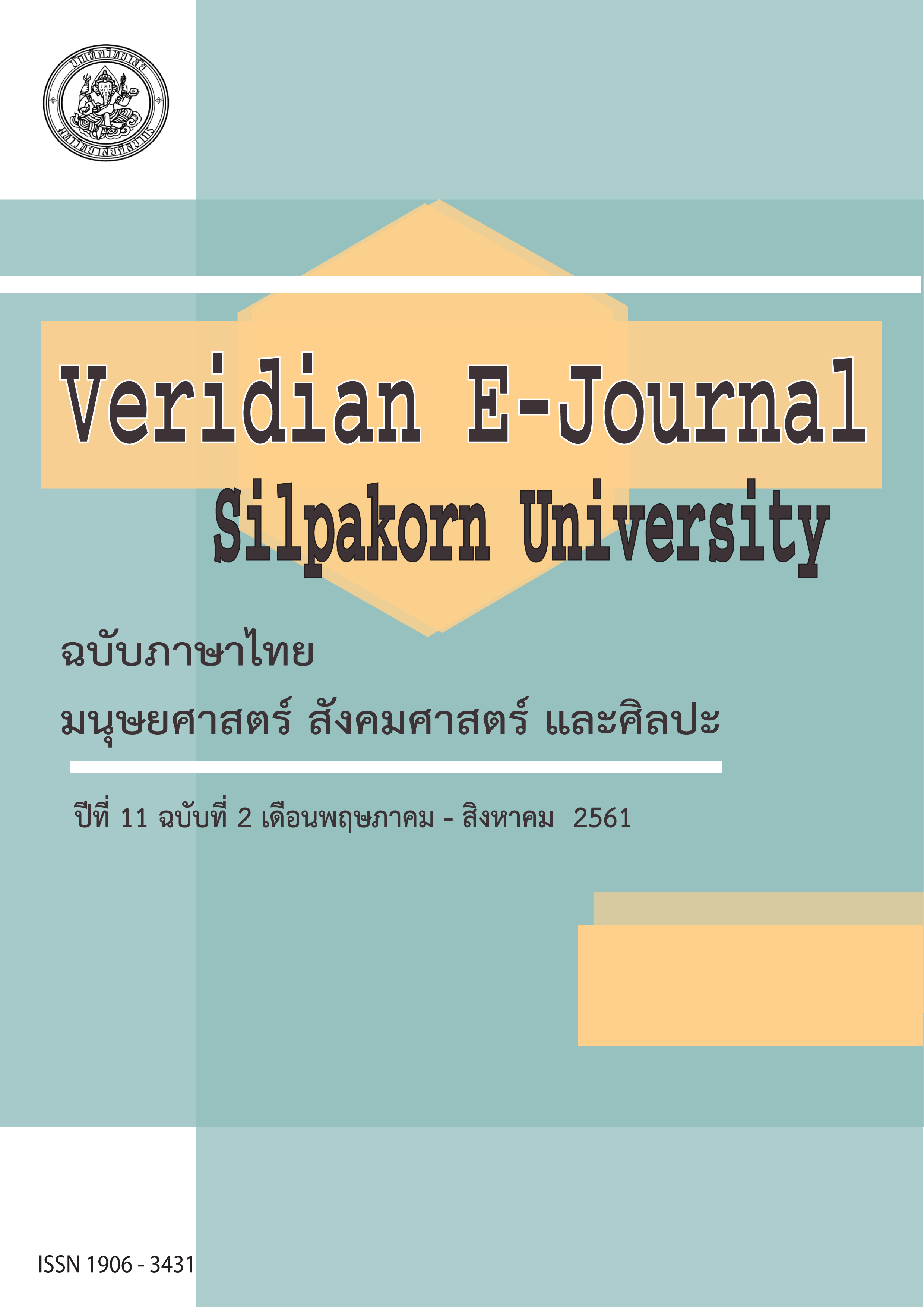กลยุทธ์การพัฒนาแหล่งท่องเที่ยวโดยการมีส่วนร่วมขององค์กรปกครองส่วนท้องถิ่น จังหวัดเพชรบุรี บนฐานแนวคิดเศรษฐกิจพอเพียง (Strategy for Developing Tourist Attractions with Participation of Phetchaburi Local Administration Organization Based on Philosophy of -) Strategy for Developing Tourist Attractions with Participation of Phetchaburi Local Administration Organization Based on Philosophy of Sufficiency Economy
Main Article Content
Abstract
การวิจัยครั้งนี้มีวัตถุประสงค์เพื่อ 1) จัดประเภทการท่องเที่ยวในจังหวัดเพชรบุรี 2) สร้างกลยุทธ์ การพัฒนาแหล่งท่องเที่ยวในจังหวัดเพชรบุรี และ 3) สร้างเครือข่ายการพัฒนาแหล่งท่องเที่ยวในจังหวัดเพชรบุรี โดยใช้ระเบียบวิธีวิจัยเชิงคุณภาพ การเก็บข้อมูลเบื้องต้นโดยใช้การสัมภาษณ์ และการประชุมแบบสนทนากลุ่ม จากผู้ให้ข้อมูลหลักประกอบด้วย 4 กลุ่ม คือ ผู้บริหารระดับสูงในองค์กรปกครอง ส่วนท้องถิ่น จังหวัดเพชรบุรี จำนวน 8 คน ผู้บริหารระดับกลางในองค์กรปกครองส่วนท้องถิ่น จังหวัดเพชรบุรี จำนวน 8 คน ผู้บริหารระดับปฏิบัติในองค์กรปกครองส่วนท้องถิ่น จังหวัดเพชรบุรี จำนวน 8 คน และผู้นำชุมชนที่เกี่ยวข้องกับแหล่งท่องเที่ยว จำนวน 8 คน รวมทั้งสิ้น 32 คน สถิติที่ใช้ในการวิเคราะห์ ได้แก่ การวิเคราะห์เนื้อหา
ผลการศึกษาพบว่า
- การจัดประเภทการท่องเที่ยวในจังหวัดเพชรบุรี พบว่าแหล่งท่องเที่ยว โดยการมีส่วนร่วมขององค์กรปกครองส่วนท้องถิ่น จังหวัดเพชรบุรี บนฐานแนวคิดเศรษฐกิจพอเพียง มี 4 ประเภท ได้แก่ 1) แหล่งท่องเที่ยวเชิงนิเวศ เช่น หมู่บ้านเศรษฐกิจพอเพียงต้นแบบ “บ้านน้ำทรัพย์” ฐานเรียนรู้เกษตรพึ่งตนเอง ไร่ทองหทัย กสิกรรมธรรมชาติ ชุมชนบ้านนายาง อ.ชะอำ จ.เพชรบุรี และสวนตาลลุงถนอม”แหล่งเรียนรู้ภูมิปัญญาคู่เมืองเพชร เป็นต้น 2) แหล่งท่องเที่ยวเชิงวัฒนธรรม เช่น ศูนย์วัฒนธรรมไทยทรงดำ เขาย้อย จังหวัดเพชรบุรี เป็นต้น 3) แหล่งท่องเที่ยวทางธรรมชาติ ได้แก่ กลุ่มเกษตรอินทรีย์บ้านดอนผิงแดด ศูนย์เครือข่ายเรียนรู้การเลี้ยงสัตว์ตามแนวเศรษฐกิจพอเพียง (ไร่สุภาวดี) เป็นต้น และ4) แหล่งท่องเที่ยวเชิงสุขภาพน้ำพุร้อนธรรมชาติ ได้แก่ บ่อน้ำพุร้อนอำเภอหนองหญ้าปล้อง จังหวัดเพชรบุรี เป็นต้น
- กลยุทธ์การพัฒนาแหล่งท่องเที่ยวในจังหวัดเพชรบุรี พบว่า มีกลยุทธ์ 5 ด้าน ดังนี้1) ด้านนโยบายสนับสนุนจากภาครัฐ 2) ด้านพัฒนาทักษะการทำงาน 3) ด้านการมีส่วนร่วมของชุมชน 4) ด้านความปลอดภัยและ 5) ด้านการสื่อสารองค์กร
- เครือข่ายการพัฒนาแหล่งท่องเที่ยวในจังหวัดเพชรบุรี พบว่า มีเครือข่าย 3 ลักษณะ ที่สำคัญ ได้แก่ 1) เครือข่ายการปรึกษาหารือ 2) เครือข่ายร่วมปฏิบัติการ และ 3) เครือข่ายภาคประชาสังคม
The objectives of this research were to: 1) categorize tourism in Phetchaburi Province, 2) create the strategy for developing tourist attractions in Phetchaburi Province, and 3) create network for developing tourist attractions in Phetchaburi Province. The qualitative research methodology was employed in this study. The preliminary data were collected, by using interview and focus group discussion, from 32 key informants from 4 groups consisting of 8 chief executives of local administrative organizations in Phetchaburi Province, 8 mid-level administrators of local administrative organizations in Phetchaburi Province, 8 practitioner-level administrators of local administrative organizations in Phetchaburi Province, and 8 community leaders relevant to tourist attractions. The data were analyzed by using content analysis.
The research results were as follows:
- It was found that there were 4 categories of tourist attractions in Phetchaburi Province with participation of Phetchaburi Local Administration Organization based on Philosophy of Sufficiency Economy as follows: 1) eco-tourism attractions such as Ban Namsap: prototype village for sufficiency economy, Thonghatai Farm: learning base for self-reliant agriculture, natural agriculture at Ban Nayang Community in Cha-am District, Phetchaburi Province, and Uncle Thanom’s sugar palm garden, 2) cultural tourist attractions such as Tai Song Dam cultural center in Khao Yoi District, Phetchaburi Province, etc., 3) natural tourist attractions such as organic agricultural group at Ban Don Pingdad, Supawadee Farm: learning network center for animal raising according to Philosophy of Sufficiency Economy, etc., and 4) health tourist attractions or natural hot springs such as hot spring at Nong Ya Plong District.
- There were 5 aspects of strategy for tourist attraction development in Phetchaburi Province as follows: 1) supporting policy of government, 2) work skill development, 3) community participation, 4) safety, and 5) organizational communication.
- It was found that there were 3 essential characteristics of network for tourist attraction development in Phetchaburi Province as follows: 1) counselling network, 2) participatory action network, and 3) civil society network.
